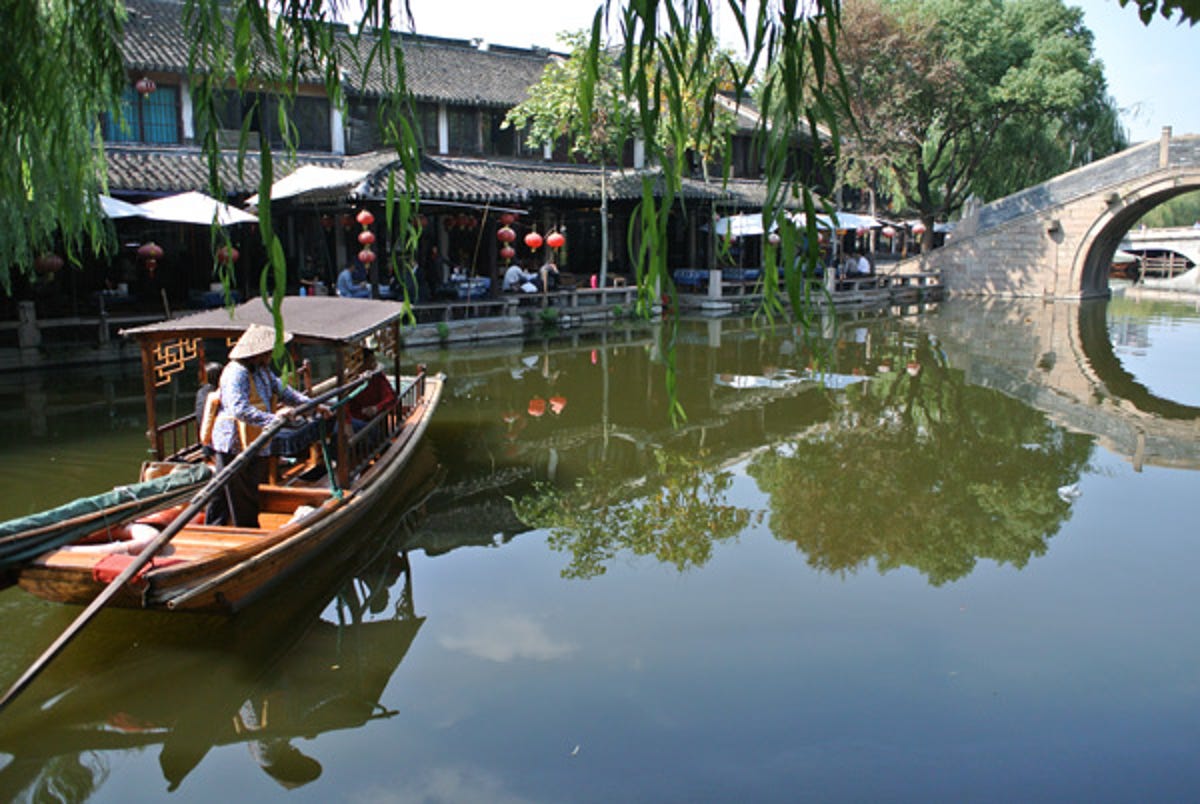
As well as observing first-hand how the Nikon 1 cameras are made, we also got the opportunity to take a bit of a shooting tour around China. Here are some sample images from the V1.
All these images were taken on the Nikon 1 V1 and presented straight from the camera, apart from resizing or cropping.
Alexandra Savvides travelled to China as a guest of Nikon.
The Nikon 1 V1 and J1 look different on the outside, but inside they are the same. The V1 is targeted more towards enthusiast photographers because of its extra features like an electronic viewfinder as well as its bulkier body.
This photo was taken at Zhouzhuang, China's number one water city, with structures dating back to the Ming and Qing dynasties.
The control system of the V1 does take some time to get used to. There's no traditional mode dial, as found on many other interchangeable lens cameras. Instead there's a dial at the back that lets you swap between four shooting modes: motion snapshot, smart photo selector, regular still image (auto or PASM control) and movie mode. After a while it does become second nature.
Most electronic viewfinders on interchangeable lens cameras have left quite a bit to be desired, but the V1's version has a resolution of 1.4 million dots and is really bright. There's also a sensor that automatically switches between the display appearing on the screen and the viewfinder when the camera is raised to your eye.
Along with the two camera bodies launched as part of the Nikon 1 system, there are also a range of lenses available. We took the 10mm f/2.8 pancake lens out for a spin to test out its bokeh when shooting wide open, with the results displayed above. It's pretty nice to look at considering how small the sensor is. We're keen to test out how the sensor handles shallow depth of field when using a fast Nikon F-mount lens with the optional adapter.
This was shot with the 10-30mm kit lens. It does show a bit of distortion at the wide end, but nothing that lens correction software can't handle. On default settings and in automatic the camera also tends to get exposure right. You can, of course, tweak exposure manually, adjusting parameters using the toggle found at the top right and the scroll wheel.
Unlike many other of its interchangeable lens camera brethren the Nikon 1 cameras don't have any art filters — at all. There are the standard picture control options including neutral, vivid and monochrome filters, but none of the effects like miniature mode or pin hole mode.
Never fear, though, as the colours rendered by JPEG images really pop. We'll have a side-by-side comparison between JPEG and RAW images in our full review of the V1.
Time to get into some low-light shots in Shanghai. This is the Waibaidu Bridge, which you may remember from such films as Spielberg's Empire of the Sun and TV shows such as The Amazing Race.
Want to see what riding in a sidecar through the streets of Shanghai looks like? Observe below.
All these evening shots were taken handheld, no tripods here. This shot is on Nanjing Road, one of the major shopping streets in Shanghai. The V1 copes really well in low light, with this shot taken at ISO 800. There's only a small degree of noise visible in the 100 per cent crop (pictured inset).
It's lucky it copes so well because there's no flash built-in to the V1 (for that, you'll need to buy the J1). See the rest of the full resolution shot in our review of the V1, coming soon.
As well as regular stills shooting, the Nikon 1 cameras can also capture still images while recording, with no interruption. When filming in movie mode, just press the shutter and up to 20 still images can be captured at full resolution.
This is the Pearl Tower on the Bund in Shanghai, lit up at night. This image was taken while shooting video (which is why it's not really centred that well...).
There are many signs in China. This is one of them. Up close and personal with the 30-110mm lens.
Motion capture is a unique feature to the Nikon 1 cameras. When activated via the dial, half press the shutter button to start the buffering process. The camera captures a still image as well as one second of footage. The soundtrack that accompanies it is one of four mellow-sounding pieces of your choosing. It looks a lot better than it sounds on paper, and you can see a demonstration of it in our video review of the V1 coming soon. Think of it like a Cinemagraph accompanied by music.
By the way this man is painting the inside of glass objects with intricate patterns. The inside, people!

